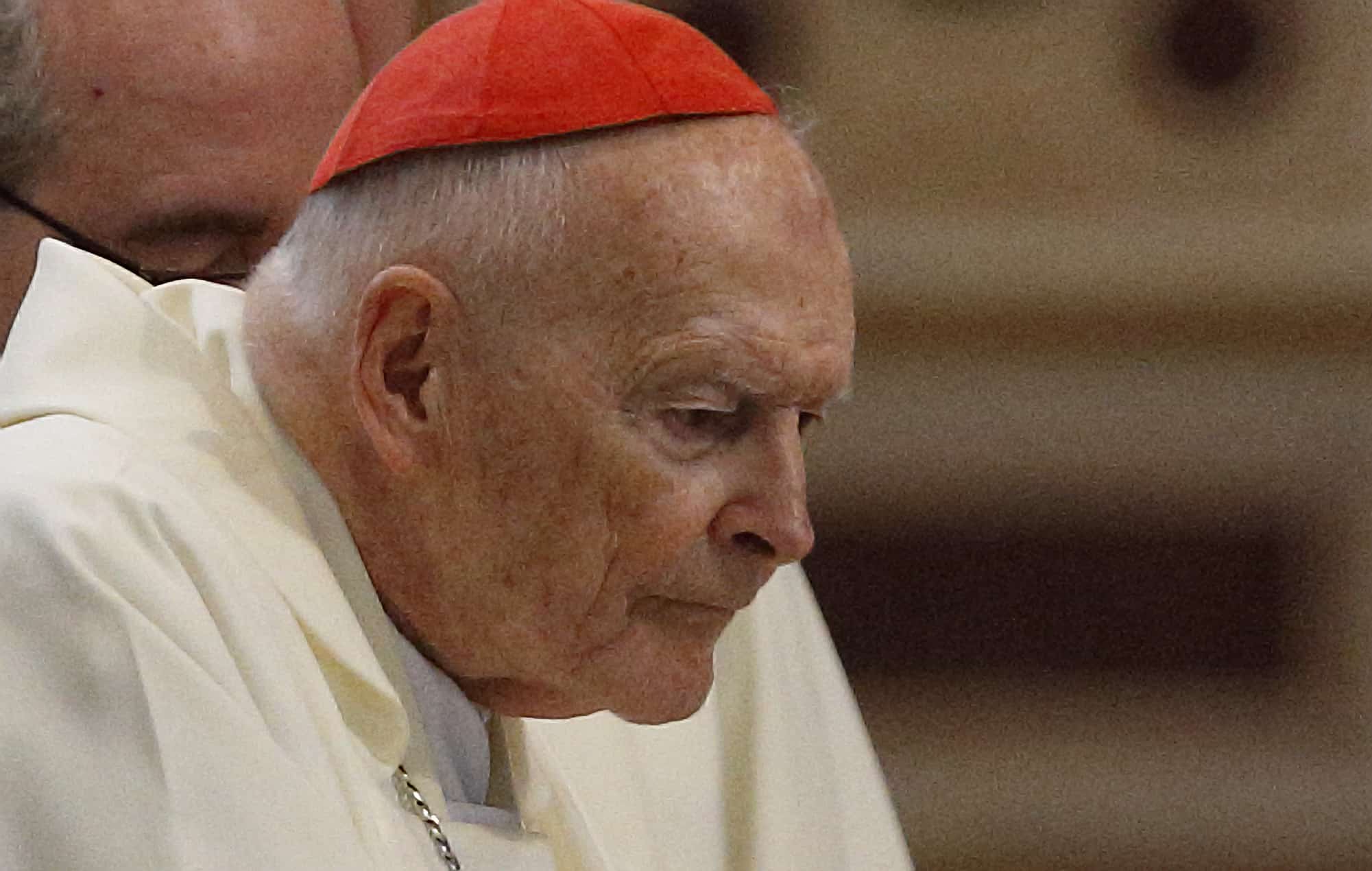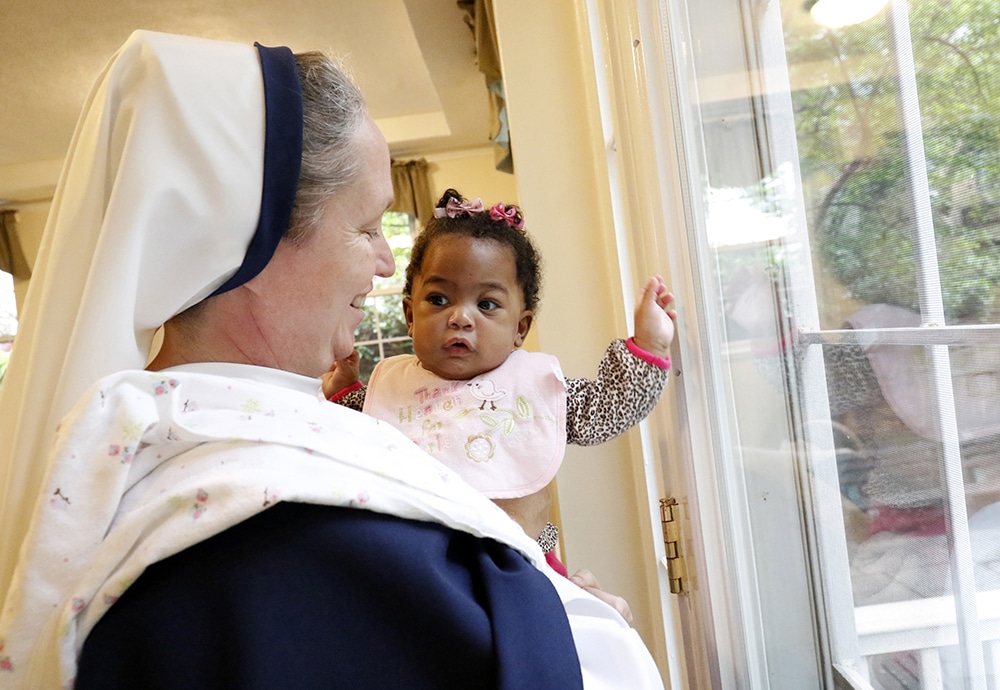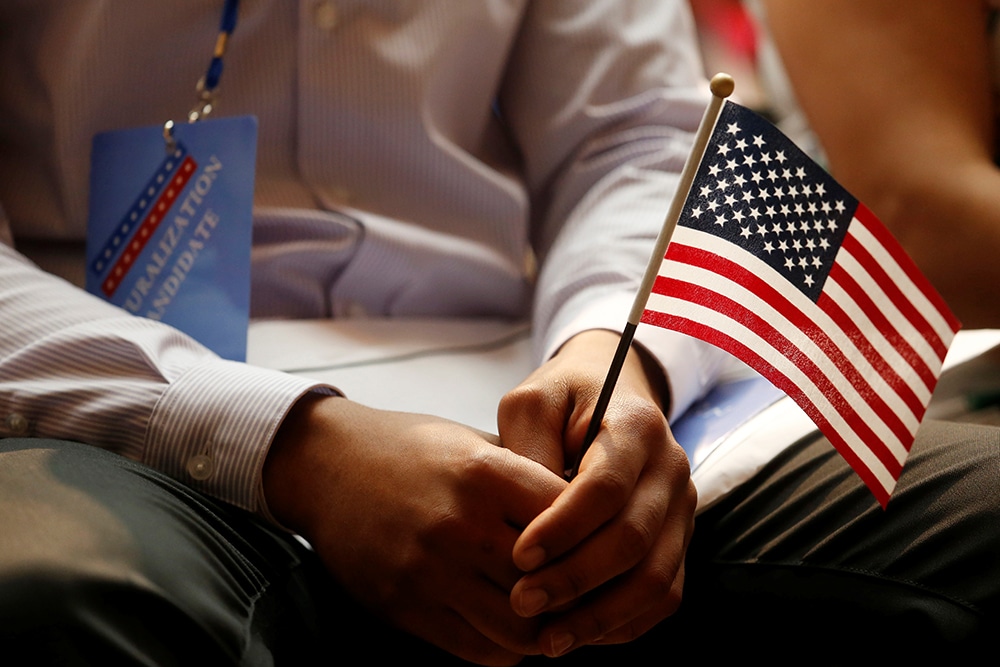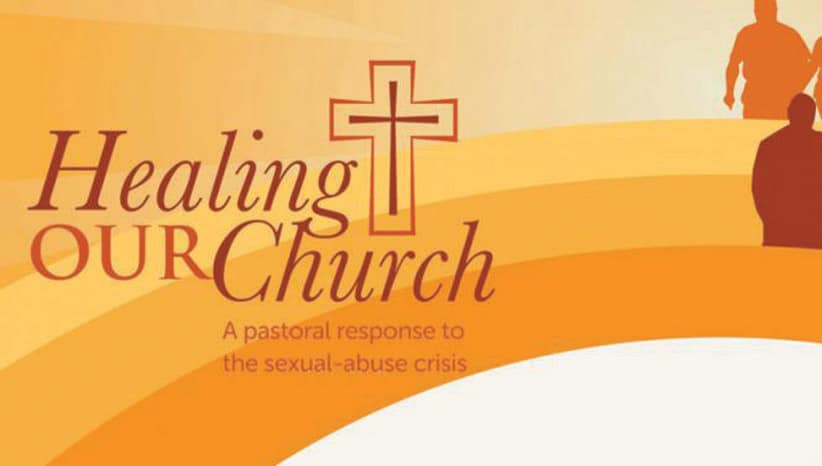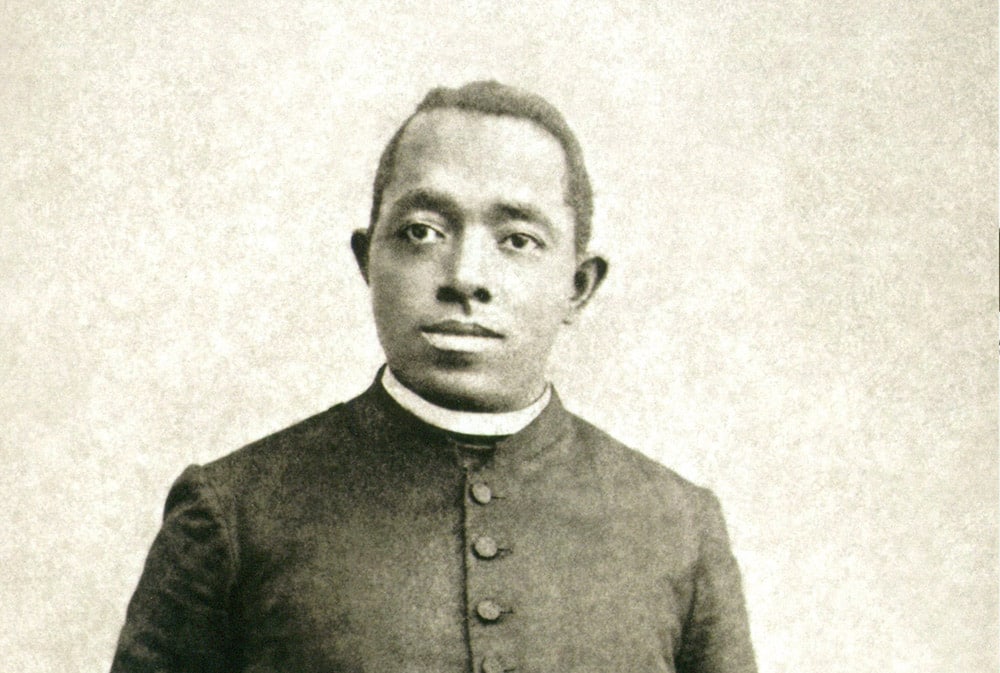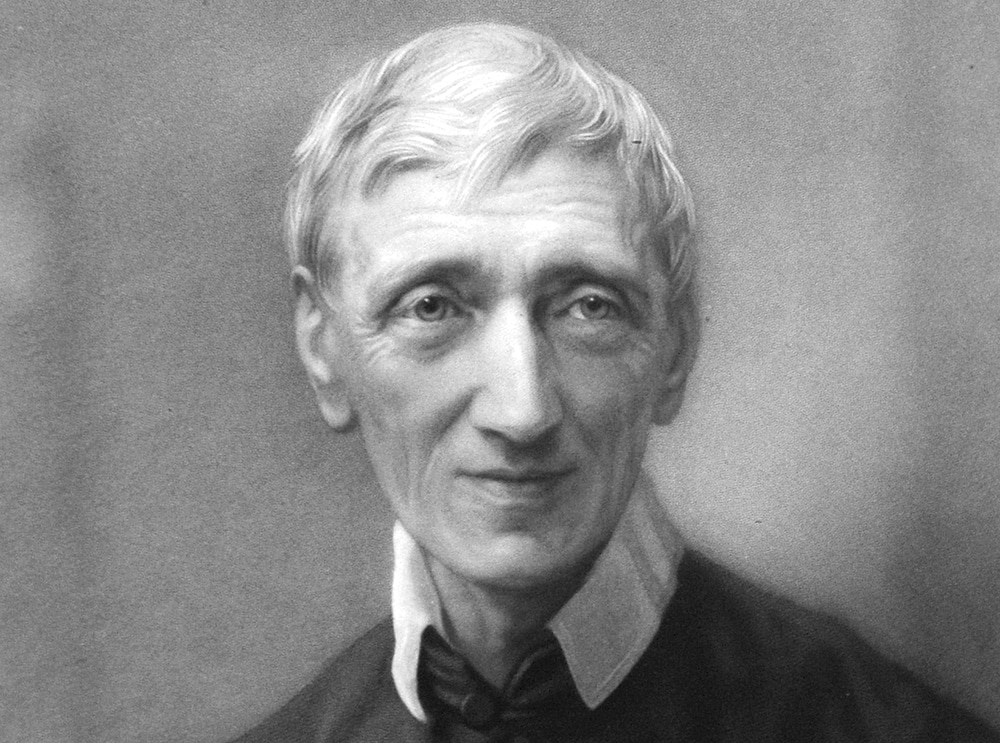Theodore McCarrick, the disgraced former cardinal-archbishop of Washington, D.C., who is alleged to have sexually abused minors and seminarians for several decades, has been removed from the clerical state, the Holy See announced Saturday.
The decision to laicize McCarrick, which had been expected in recent weeks, completes the downfall of the 88-year-old who once led one of the most prominent American archdioceses and had a high profile in ecclesial circles at home and abroad.
“This is the nuclear option, if you will. Not only did he have to resign his position in the College of Cardinals, but also to have his ability to function as a common priest terminated, that’s a pretty radical thing,” said Father Steven M. Avella, a Marquette University history professor who studies the Catholic Church’s history in the United States, in an interview with Our Sunday Visitor.
The Vatican said the Congregation for the Doctrine of the Faith (CDF) found McCarrick guilty on Jan. 11 of “solicitation in the sacrament of confession and sins against the Sixth Commandment with minors and with adults, with the aggravating factor of the abuse of power.”
McCarrick appealed the decision, but the CDF upheld its ruling this past Wednesday and notified him yesterday. A Vatican statement said Pope Francis “recognized the definitive nature of this decision made in accord with law,” making the decision final.
The move to remove a former prince of the Church from the clerical state — colloquially known as defrocking or laicizing — is the most severe punishment the Church can impose for a heinous offense such as sexual abuse. Canon lawyers liken it to the death penalty in Church law.
“That didn’t even happen to Maciel,” said Father Avella, referring to the late Father Marcial Maciel Degollado, a Mexican priest who founded the Legion of Christ and was later found to have sexually abused boys and young men. Father Degollado, who was ordered by Pope Benedict XVI in 2005 to renounce public ministry and live a life of prayer and penance, remained in the clerical state until he died in 2008.
It is important to note, however, that laicization has become more common in recent years. From 2004 to 2013, the Vatican has dismissed 848 men from the priesthood as a result of sex abuse allegations that were found to be true. Priests can request to be removed from the clerical state if they want to leave ministry and get married, or they can be laicized as a punishment for ecclesiastical crimes.
Father Avella added that there is some precedent for McCarrick’s laicization, noting that Pope Francis in recent years dismissed two retired Chilean bishops and the former papal nuncio to the Dominican Republic from the clerical state for sex abuse crimes.
But what makes the McCarrick case especially notable was his former status as a cardinal who for several years was a leading public voice for the Church in the United States, said Lawrence Cunningham, an emeritus theology professor at the University of Notre Dame.
“And it’s singular in the fact that this is someone who was so high in the hierarchy,” Cunningham told OSV.
Having now been laicized, McCarrick has permanently lost his capacity to function as a bishop. Though ordination has an ontological dimension that makes the man a priest forever, the laicized priest or bishop is no longer authorized to exercise sacred ministry.
“The ordination is not undone. That’s an indelible character that remains,” said Kurt Martens, a canon law professor at The Catholic University of America. “What is removed are the rights and obligations that are connected to the priestly state.”
Martens told OSV that someone who has been removed from the clerical state can no longer present himself as a priest or wear clerical garb. Only in situations where someone is in danger of imminent death is a laicized priest allowed to hear a confession or provide the anointing of the sick.
“In that situation, the priest can do that validly and actually has a duty to do that,” said Martens, who added that most elderly priests removed from the clerical state are still entitled to the pension system that they paid into, as well as their Social Security benefits.
Martens also said that Church officials, when deciding whether to remove a priest from the clerical state, have to remember that by doing so, they lose the ability to say where he can live or demand that he lead a quiet life of prayer and penance.
“Once you lose that control there’s not much you can say to the priest,” Martens said. “It’s almost like a Catch-22.”
In a prepared statement, Cardinal Daniel N. DiNardo, the archbishop of Galveston-Houston and president of the U.S. Conference of Catholic Bishops, said the Holy See’s announcement regarding McCarrick is “a clear signal” that abuse will not be tolerated.
“No bishop, no matter how influential, is above the law of the Church,” Cardinal DiNardo said. “For all those McCarrick abused, I pray this judgment will be one small step, among many, toward healing. For us bishops, it strengthens our resolve to hold ourselves accountable to the Gospel of Jesus Christ. I am grateful to Pope Francis for the determined way he has led the Church’s response.”
Robert Hoatson, the co-founder and president of Road to Recovery, a nonprofit that advocates for victims of clergy sex abuse, told OSV that though he was happy to hear the news of McCarrick’s laicization, he sees it primarily as a public relations ploy in advance of the Feb. 21-24 Vatican summit of episcopal conference presidents to discuss the abuse crisis.
“I don’t think this meeting in Rome is going to do anything,” said Hoatson, a former priest who was ordained by McCarrick in 1997. After years of clashing with McCarrick’s successor in Newark, Hoatson petitioned the Vatican to leave the priesthood and was removed from the clerical state in 2011.
Even as McCarrick has now been removed from the clerical state, questions will linger as to how exactly the former cardinal was able to rise in the ranks despite indications that clergy and Church officials close to him had heard rumors about or knew of his misconduct.
“I hope the investigation into McCarrick’s promotions continue,” Father Avella said. “I hope nobody gives up asking the questions, ‘Who promoted him and why? What did they know? When did they know it?'”
Those questions were raised last August in a controversial public letter written by the former papal nuncio to the United States, Archbishop Carlo Maria Viganò, who suggested that several current archbishops and cardinals, as well as Pope Francis, knew about McCarrick’s past behavior but failed to punish him.
Last year, the Vatican said Pope Francis had ordered a “thorough study” of all relevant documents pertaining to McCarrick’s ecclesial career.
Ordained a priest in 1958 by Cardinal Francis Spellman, then-archbishop of New York, McCarrick was appointed to several prominent positions throughout his career. In the mid-1960s, he served as president of the Catholic University of Puerto Rico before being recalled to the Archdiocese of New York to become the secretary for Cardinal Terence Cooke.
In May 1977, McCarrick was appointed an auxiliary bishop in New York. Four years later, he was named the founding bishop of Metuchen, New Jersey, before becoming the fourth archbishop of Newark in May 1986.
Pope St. John Paul II appointed McCarrick as archbishop of Washington in November 2000. Three months later, he was elevated to the rank of cardinal. In 2005, then-Cardinal McCarrick participated in the conclave that selected Pope Benedict XVI to succeed John Paul II.
Pope Benedict XVI accepted McCarrick’s resignation in 2006, after he had reached retirement age.
Then last summer, the Archdiocese of New York made public a report that McCarrick was alleged to have sexually abused a 16-year-old boy in the 1970s. McCarrick denied the allegations, but a lay review board last year described them as “credible and substantiated.” McCarrick was removed from active ministry on June 20, 2018. More allegations that he had abused minors, as well as claims that he had sexually harassed and assaulted priests and seminarians, came forth in subsequent months.
McCarrick currently resides at St. Fidelis Friary in Victoria, Kansas, in the Diocese of Salina.

